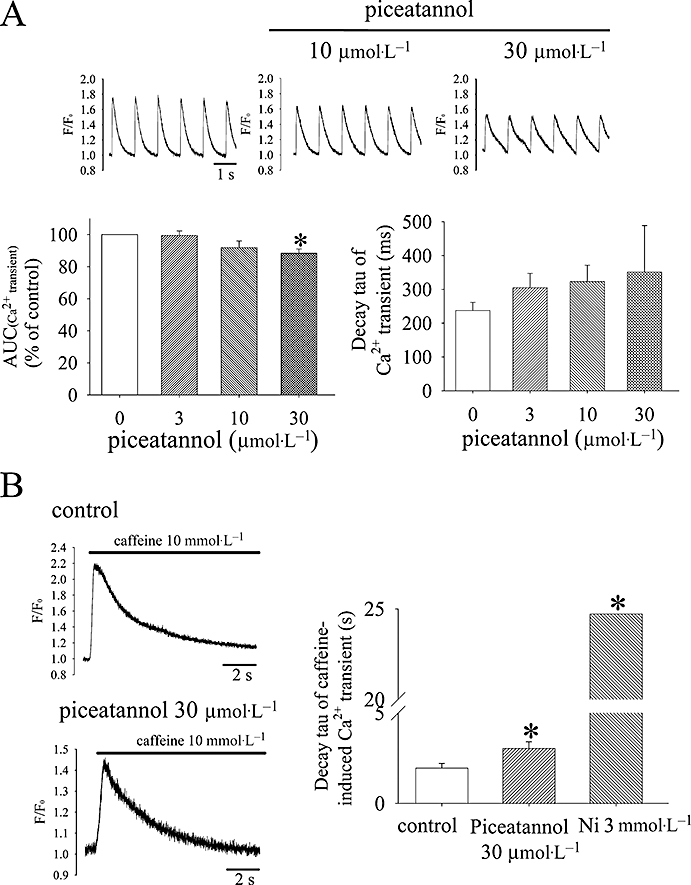Figure 6.

(A) Effect of piceatannol in the intracellular Ca2+ transients of electrical paced rat ventricular cells and the decay rate of caffeine-induced Ca2+ transients. The area under Ca2+ transient (AUC) was integrated and averaged from consecutive five beatings in the steady-state condition of control or after applying piceatannol for 5 min from 10 different cells. The decay rate of Ca2+ transient was analysed by simple one-exponential equation (n= 10) as shown in the right bottom of (A). (B) Caffeine 10 mmol·L−1 was applied to elicit intracellular Ca2+ release in quiet cells which previously had electric pacing to a steady state in the absence and presence of piceatannol as shown in the left panel of (B). The decay rate of caffeine-released intracellular Ca2+ was also analysed by simple one-exponential equation. NiCl2 (3 mmol·L−1) was used to block Na+-Ca2+ exchange which markedly prolonged the decay time of caffeine-elicited Ca2+ transient as shown the measured decay tau in the right panel of (B). Piceatannol 30 µmol·L−1 significantly slowed the decay rate. Data are shown as mean ± SEM (n= 6). *P < 0.05 versus control group by one-way anova with Duncan's new multiple range test.
